Introduction
The health and medical industries depend more on software applications to provide essential services, manage patient information, and operate medical devices more efficiently than ever before. This reliance on software makes its quality non-negotiable, ensuring safety, reliability, and efficiency in healthcare. As such, standards like ISO 13485 and regulations such as the EU Medical Device Regulation (MDR) are indispensable for ensuring safety, reliability, and efficacy in medical software development and deployment.
At BetterQA, we recognize the critical role of software quality in the health and medical sectors, where safety and reliability are paramount. Adhering to standards like ISO 13485 and EU MDR isn’t just about compliance for us; it’s about commitment to excellence. Our expertise in quality assurance ensures medical software meets and exceeds these rigorous standards. We focus on enhancing healthcare services’ safety, reliability, and efficiency through our targeted QA methodologies, addressing the unique challenges of medical software development and deployment.
Key Standards and Regulations
ISO 13485 is an internationally recognized standard that specifies requirements for a quality management system (QMS). An organization must demonstrate its ability to provide medical devices and related services that consistently meet customer and applicable regulatory requirements.
It is designed for organizations involved in designing, producing, installing, and servicing medical devices and related services. ISO 13485 focuses on risk management and risk-based decision-making processes, emphasizing the importance of meeting regulatory and customer requirements, managing risk, and maintaining effective processes to ensure the high quality of medical devices.
On the other hand, the EU MDR imposes stringent regulatory requirements for the marketing and operation of medical devices in the European Union. It introduces new obligations for medical device manufacturers, including enhanced clinical evidence, post-market surveillance, quality, and safety standards to ensure device traceability and patient safety. The regulation aims to provide a robust framework for medical device approval, emphasizing the need for transparency, reliability, and patient safety.
What is the Relationship between ISO 13485 and the EU MDR?
According to PECB, ISO 13485 and the EU Medical Device Regulation (MDR) are two distinct frameworks that play a crucial role in the medical device industry, especially in ensuring conformity assessment. Although obtaining ISO 13485 certification isn’t legally mandated for marketing medical devices in Europe, it significantly aids in adhering to EU MDR requirements. It offers various benefits like improved quality, risk management, ongoing improvement, and competitive edge. However, manufacturers must still fulfill specific EU MDR regulatory demands and establish a compliant Quality Management System (QMS) per ISO 13485.
How ISO 13485 helps with EU MDR:
- It provides a step-by-step way to reduce risks from the design stage to when the product is in users’ hands, ensuring devices are safe and work well.
- It helps ensure that the parts and materials used in devices are of good quality by setting rules for choosing and checking on suppliers.
- It helps organize important documents and records, which is handy during audits and makes it easier to show that you follow EU MDR rules.
- It encourages companies to look for ways to improve their devices by regularly checking their quality systems and fixing any issues.
In short, while ISO 13485 is crucial for meeting EU MDR standards, companies must take a few more steps to meet all the EU MDR requirements fully.
Why It Matters for BetterQA
For us at BetterQA, aligning with ISO 13485 and the EU MDR means we can help medical device makers meet the highest quality and safety standards. We use various testing methods, such as functional, usability, and performance testing, to ensure medical software and devices are reliable, safe, and effective.
Our Approach:
Our focus is on understanding the unique challenges of the medical sector, including regulatory requirements. By employing comprehensive testing techniques, we aim to enhance the quality of medical software and devices, helping our clients achieve regulatory compliance and excellence in the market.
Conclusion
Integrating ISO 13485 and EU MDR standards into quality assurance is crucial in the medical device industry. It ensures products are developed to the highest quality standards, promoting patient safety and effective medical care. At BetterQA, our expertise and thorough testing strategies make us a vital partner for manufacturers aiming for success in this highly regulated field.
Stay Updated with the Latest in QA
The world of software testing and quality assurance is ever-evolving. To stay abreast of the latest methodologies, tools, and best practices, bookmark our blog. We’re committed to providing in-depth insights, expert opinions, and trend analysis that can help you refine your software quality processes.
Delve deeper into a range of specialized services we offer, tailored to meet the diverse needs of modern businesses. As well, hear what our clients have to say about us on Clutch!

